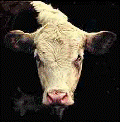Animal Science, Department of
Dry-Aged Beef Flavor Development, and the Effect of High Levels of Vitamin-E on Beef Color Stability
First Advisor
Chris R. Calkins
Second Advisor
Gary A. Sullivan
Third Advisor
Kaustav Majumder
Date of this Version
Summer 8-2023
Document Type
Article
Citation
Herrera, N.J. 2023. Dry-aged beef flavor development, and the effect of high levels of vitamin-E on beef color stability. UNL Digital Commons. 1-355.
Abstract
Palatability and consumer purchasing are essential factors of fresh meat. To meet consumer expectations during purchasing and consumption, fresh beef must maintain desirable cherry-red color at retail and achieve desirable cooked flavor. Dry-aged beef popularity has grown, and identifying methods to ensure quality dry-aged meat is necessary to maintain demand. To understand dry-aged palatability, this dissertation addressed effects of moisture loss and aging time, fundamental factors of dry-aged beef, using bone-in and boneless strip loins. Study two investigated flavor development using cookery methods and internal temperatures in boneless and bone-in dry-aged beef. In study one, increased dry-aging time (creation effect) decreased moisture content (P < 0.001) and yield (P < 0.001), increased free amino acid content (P < 0.001), and trained flavor attributes (P < 0.05). Increased moisture loss (concentration effect) in dry-aging decreased moisture content (P < 0.001), water activity (P < 0.001) and yield (P < 0.001), increased percent protein (P < 0.001), polyunsaturated fatty acid content (P = 0.04) free amino acids (P < 0.001) and desirable trained flavor attributes (P < 0.05). Principal component analysis (PCA) elicited aging time is required first to generate dry-aged flavor attributes, followed by moisture loss to intensify cooked flavors. In study two, boneless loins had greater moisture and trim loss, increased oxidation, and reduced yield (P < 0.05). Consumer assessment identified combinations of dry-aged bone-in loins, cooked using charbroil grill, to cook temperature of 63°C optimized cooked flavor (P < 0.05). Feeding high vitamin-E (alpha-tocopherol) sustained desirable beef color after prolonged aging and retail display. In study three, vitamin-E created higher tocopherol content (P < 0.05) in vitamin-E fed cattle, creating higher a* redness values (P < 0.05), lower discoloration, and lower oxidation (P < 0.001). In study four, vitamin-E samples had greater a* values (P < 0.01), lower discoloration, and oxidation (P < 0.0001) during prolonged retail display.
Advisor Chris R. Calkins and Gary A. Sullivan
Included in
Agriculture Commons, Animal Sciences Commons, Food Biotechnology Commons, Food Processing Commons


Comments
Nicolas Herrera A DISSERTATION Presented to the Faculty of The Graduate College at the University of Nebraska In Partial Fulfillment of Requirements For the Degree of Doctor of Philosophy, Major: Animal Science, Under Supervision of Professors Chris R. Calkins and Gary A. Sullivan. Lincoln, Nebraska: August, 2023
Copyright © 2023 Nicolas Herrera